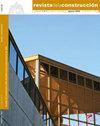Numerical investigation of the lateral load behavior of core and coupled rocking walls
IF 1.4
4区 工程技术
引用次数: 0
Abstract
During last few decades, the researchers have developed new structural systems which have no or minor damage after being hit by severe events like earthquake. Development of self-centering wall having alternative energy dissipation mechanisms was one of these achievements. A wide variety of rocking wall systems, such as jointed walls, hybrid walls, precast walls with end columns (PreWEC), and PreWEC core wall systems, are proposed and studied. This paper describes an analytical investigation of the lateral load behavior of two new types of hybrid rocking wall systems. Core rocking wall is achieved by merging four single hybrid rocking walls and coupled rocking wall is accomplished by coupling two rocking walls using embedded reinforced concrete beams. The concept of coupling hybrid rocking walls using embedded reinforced coupling beam is emerged from previous coupled conventional shear walls studies. As single rocking wall system, in coupled and core rocking wall, post-tensioning tendons are used as a mean to provide self-centering force, and mild steel bars are used to dissipate energy. The nonlinear behavior of the wall is due to the gap opening at the base joint. Three-dimensional finite element model of each system was developed. The stress distribution, crack propagation, and critical sections of these systems are investigated. The effect of spalling concrete cover in the toe region due to rocking action is explained. In addition, the reduction in stiffness and lateral load resisting capacity of the systems due to cracks is monitored. Finally, the lateral load behavior of single rocking walls is compared to that of core and coupled rocking wall systems.岩心与耦合摇摆壁横向荷载特性的数值研究
在过去的几十年里,研究人员开发了新的结构体系,这些结构体系在遭受地震等严重事件的袭击后没有或只有轻微的破坏。具有替代能量耗散机制的自定心墙体的发展就是这些成就之一。提出并研究了各种各样的摇墙系统,如接缝墙、混合墙、带端柱的预制墙(PreWEC)和PreWEC核心墙系统。本文对两种新型混合摇摆墙体系的横向荷载特性进行了分析研究。核心摇墙是通过合并四个单一的混合摇墙实现的,耦合摇墙是通过预埋钢筋混凝土梁耦合两个摇墙实现的。预埋配筋耦合梁耦合混合晃动墙的概念是在传统剪力墙耦合研究的基础上提出的。作为单摇墙系统,在耦合和核心摇墙中,采用后张筋作为提供自定心力的手段,采用低碳钢条作为耗能。墙体的非线性行为是由基础节点的间隙张开引起的。建立了各系统的三维有限元模型。研究了这些系统的应力分布、裂纹扩展和临界截面。分析了振动作用对趾部混凝土保护层剥落的影响。此外,还监测了由于裂缝而导致的系统刚度和抗侧向载荷能力的降低。最后,比较了单摇墙与岩心和耦合摇墙系统的横向荷载特性。
本文章由计算机程序翻译,如有差异,请以英文原文为准。
求助全文
约1分钟内获得全文
求助全文
来源期刊

Revista de la Construccion
工程技术-工程:土木
CiteScore
2.30
自引率
21.40%
发文量
0
期刊介绍:
The Journal of Construction is aimed at professionals, constructors, academics, researchers, companies, architects, engineers, and anyone who wishes to expand and update their knowledge about construction. We therefore invite all researchers, academics, and professionals to send their contributions for assessment and possible publication in this journal. The publications are free of publication charges.
OBJECTIVES
The objectives of the Journal of Construction are:
1. To disseminate new knowledge in all areas related to construction (Building, Civil Works, Materials, Business, Education, etc.).
2. To provide professionals in the area with material for discussion to refresh and update their knowledge.
3. To disseminate new applied technologies in construction nationally and internationally.
4. To provide national and foreign academics with an internationally endorsed medium in which to share their knowledge and debate the topics raised.
 求助内容:
求助内容: 应助结果提醒方式:
应助结果提醒方式:


